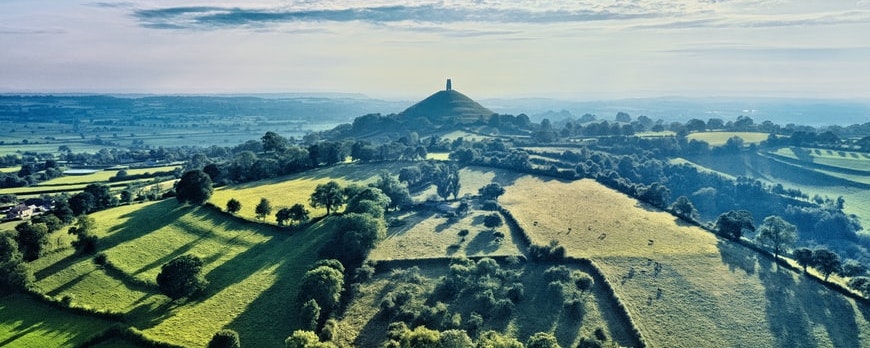Yes, it’s home to festivals and carnivals, but it’s also a quirky and magical mix of myth and history and Paganism and early Christianity where the past and present happily co-exist. This vibrant place has much to offer the visitor!
The surrounding countryside is beautiful, and the local skyline is dominated by Glastonbury Tor or hill. Thousands of years have left evidence of early Christianity and a range of civilizations and given birth to legends: Avalon and the meeting place of the dead, King Arthur’s burial place, and the resting place of the Holy Grail.
Whether you want a more traditional experience or one that embraces the magical and alternate, Glastonbury is for you.
Glastonbury Tor
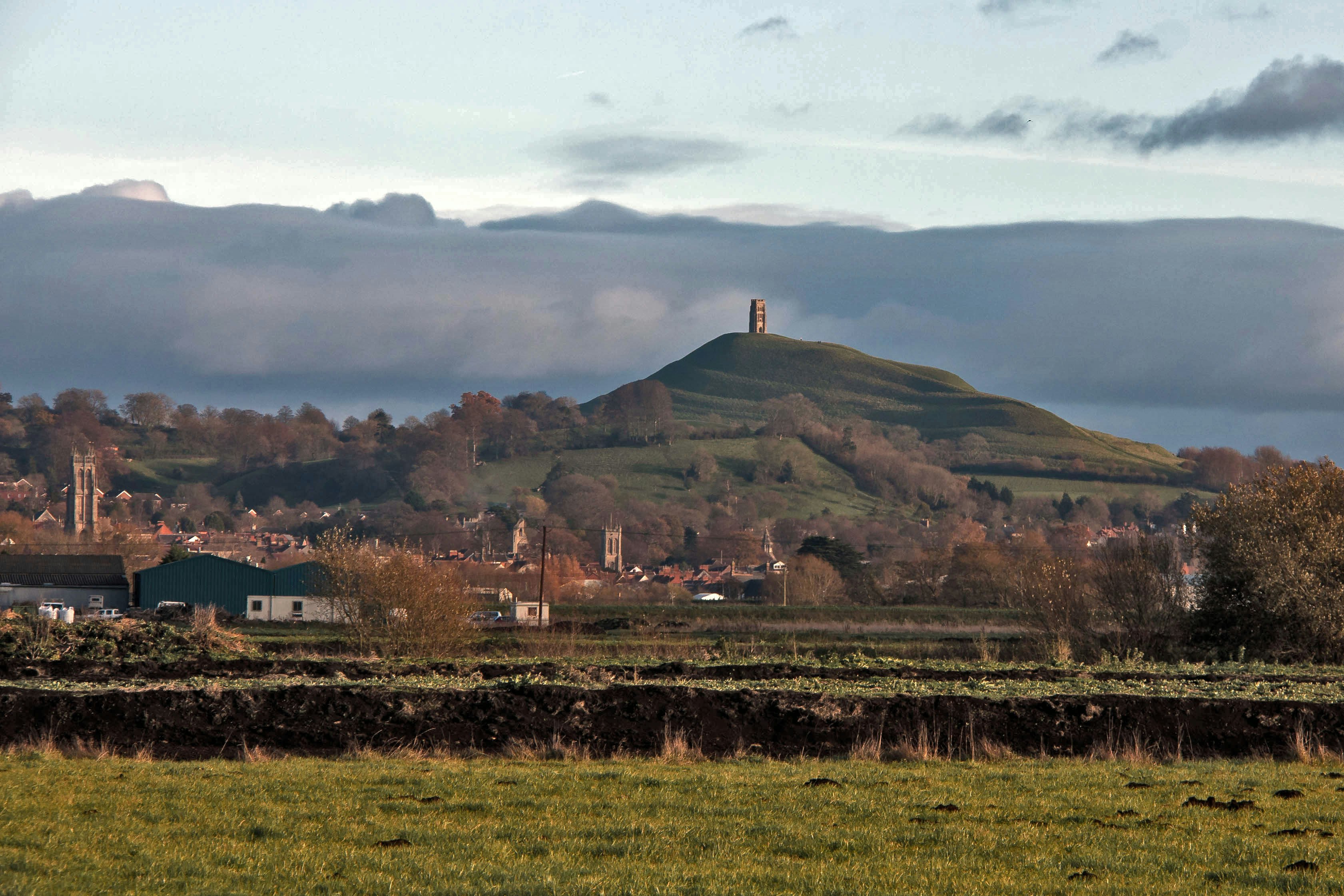
It is thought there was a vast lake at the foot of the Glastonbury Tor 2000 years ago; the Tor was referred to as “the Island of Glass. The remains of a maze and the terracing around the Tor date back several millennia to about the same period as Stonehenge. According to folklore, the Tor is home to the fairy folk and the Lord of the Underworld. For the visitor who climbs to the summit there is the reward of breath-taking views and a visit to the Tower which is all that remains of a 14th century church.
Glastonbury Way
The Glastonbury Way refers to a recently launched walk or self-guided tour. It takes in parts of the countryside, the town centre, and places of pilgrimage. The full route extends for 7 ½ miles and runs through town roads and rural paths and lanes. Depending on your energy levels and the time you have, you could explore part of the Way as a gentle walk or as a more strenuous ramble. A leaflet with a map is available. Once fully completed, the route will offer benches, and boards that will provide information on the history, geology, and mythology.
Glastonbury Abbey
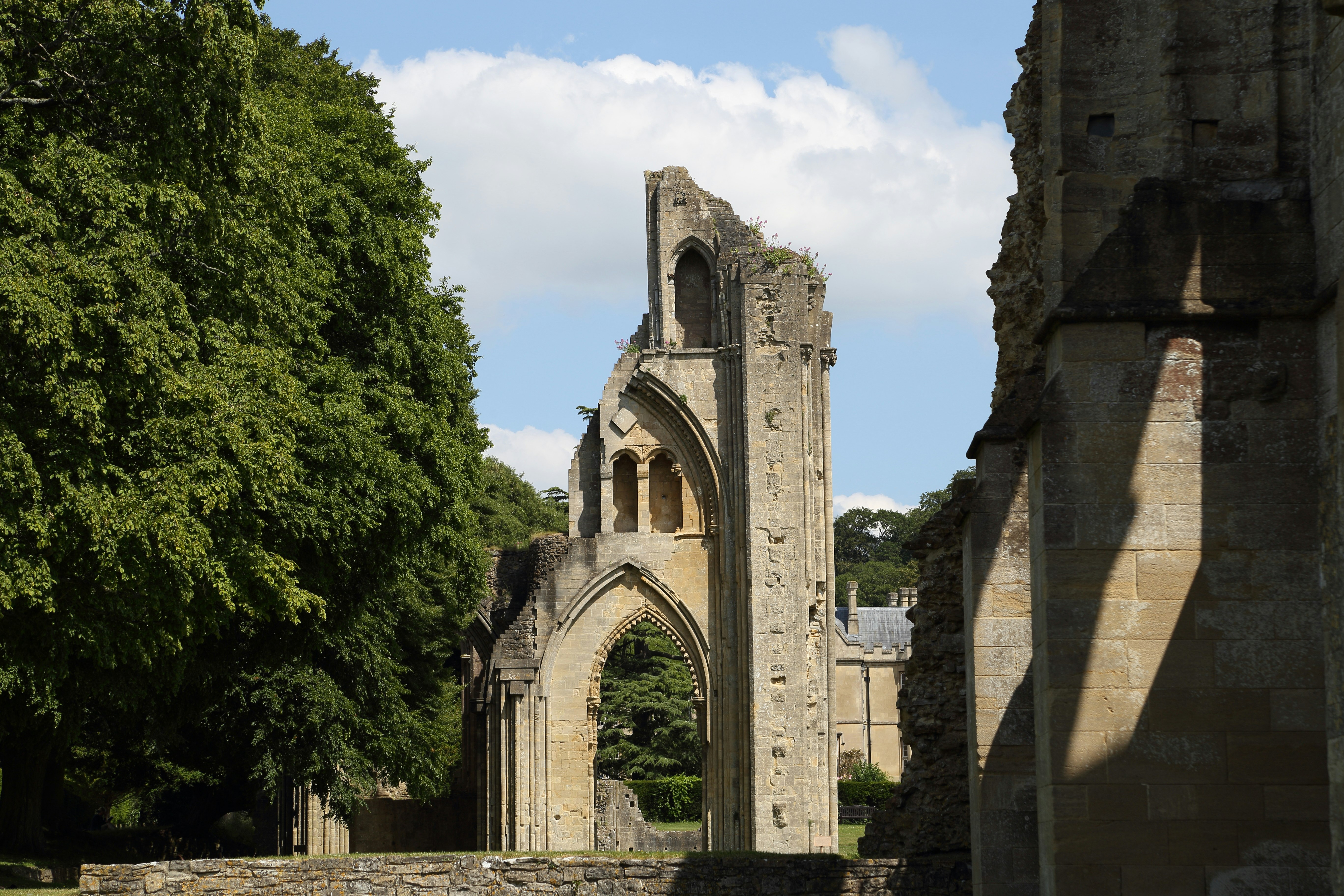
No trip to the town would be complete without a visit to Glastonbury Abbey. This imposing albeit ruined Medieval abbey is set in 37 acres of parkland and is closely connected with the birth of Christianity in England. While it is not unusual for religious buildings to have strong historical links to events and people, this one also has a connection to legend and myth, notably King Arthur and Joseph of Arimathea. In addition to the building and grounds, the abbey hosts a range of fun events for adults and children: activities in the grounds, fireworks, story reading, and musical events.
The Glastonbury Carnival
The first record of an organised procession to mark the thwarting of the Gun Powder Plot was in a gazette dated 9th November 1854. The popularity and size of the event varied over the decades but, as the Carnival and its success grew, the activities expanded to include raffles, sales, dance, concerts, fetes, horse racing, and a Christmas party for Children. The modern Somerset Carnivals, which include Glastonbury’s, are regarded as the largest illuminated processions in Europe, and the walking participants wear wonderful, colourful costumes.
The Mural Trail
In keeping with Glastonbury’s community spirit and celebration of creativity, various people and organisations worked together to create the vibrant Glastonbury Mural Trail which was launched in 2019. There are now more than 50 murals throughout the town which add to its character, beauty, and appeal. While many works have been created by local artists, others are by national and international artists. Like many other projects, the trail is constantly growing and evolving. Maps can be downloaded online or obtained from the Information Centre.
The Glastonbury Music & Arts Festival
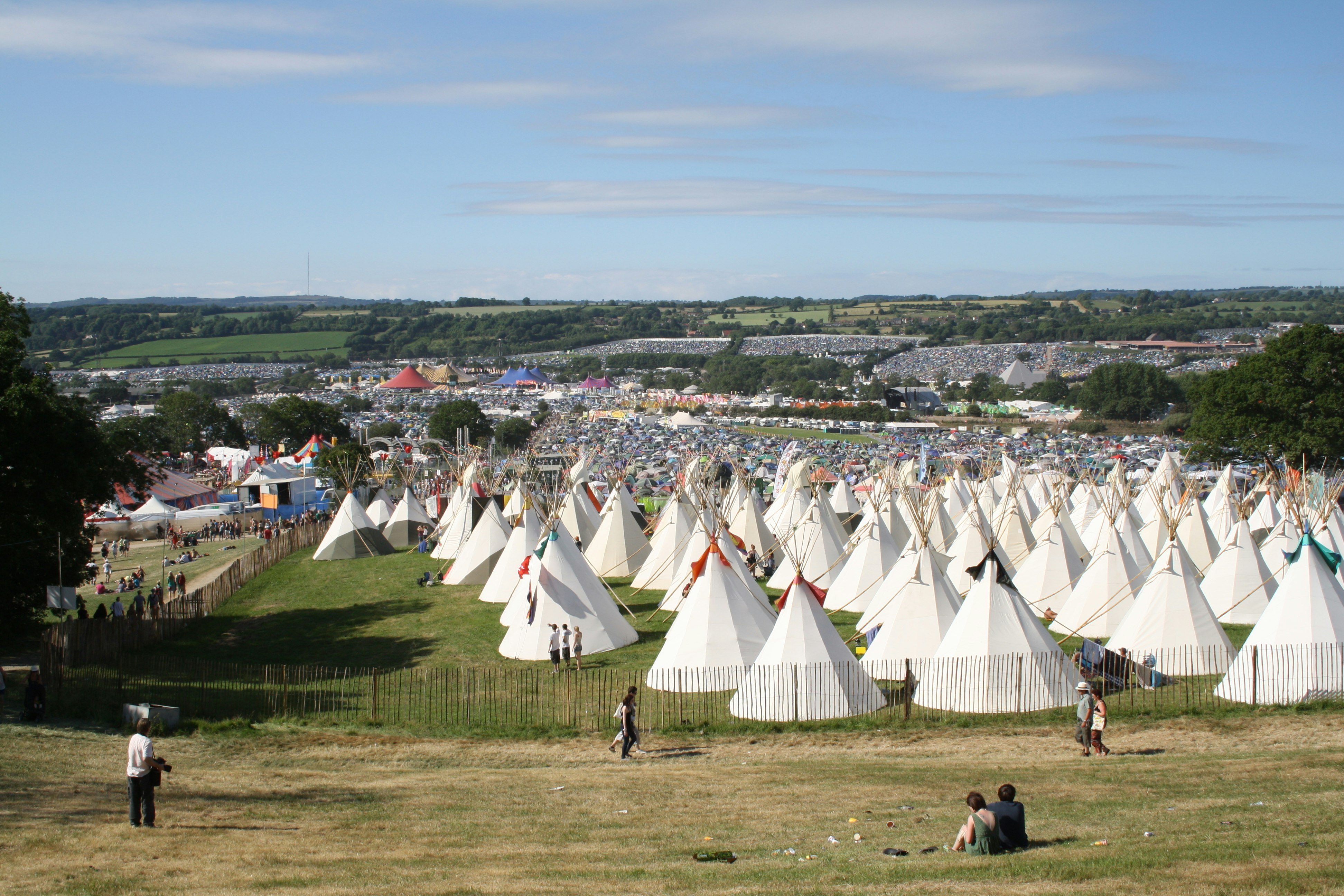
One associates the Glastonbury Festival with music but it has become so much more over the decades both in size and diversity. It is now the largest greenfield music and arts festival in the world. The 2019 programme demonstrates this: musical gigs from pop to rock to jazz, dance, eco-tech demonstrations, alternative medicine displays, processions, fringe theatre, talks and debates, night-time cinemas, mime, food and craft markets, theatre and a circus for children, and arts and crafts activities. A percentage of takings goes to various worthy charities and organisations.
The Chalice Well and Gardens
These attractions are deeply rooted in myth and legend. The story goes that Joseph travelled to the UK after the crucifixion with the Holy Grail. When he reached the Isle of Avalon, he is said to have thrust his staff into the ground, and it took root and became the revered Glastonbury Thorn. He is also said to have buried the Grail below the Tor and, at that spot, a spring began to flow.
To add a further layer, King Arthur and his knights are said to have gone in search of the Grail. The water at the site now known as the Chalice Well was believed to grant those who drank it eternal youth. Interestingly, regardless of conditions, these waters flow constantly, steadily, and at an even temperature. Even if no mystical or religious credence is given to the spring, water is associated with life.
Vicar’s Close
To visit this street, you will need to travel 5 miles from Glastonbury to Wells. Vicar's Close, constructed from the mid-14th to mid-15th century, has the distinction of being the oldest residential street in Europe. The houses were built for clergy originally and today all 27 of them are Grade I listed. It also features an intriguing optical illusion. This road is 460 feet long and paved with stone down the middle. If you stand at the main entrance, the space between the two rows of houses makes it appear as though the street is longer than it is. Conversely, when viewed from the other end the road appears far shorter.
The Tomb of Dion Fortune
One of the attractions that are more part of the occult face of Glastonbury can be found in the town cemetery: the grave of Violet Mary Firth, better known as Dion Fortune. She was a very influential early 20th century magician, teacher of the occult arts, and co-founder of the occult organisation The Fraternity of the Inner Light. Her influence is still strong in active pagan groups. Fortune also wrote several books – both fiction and nonfiction – that are still read today. Her memorial is cared for by those who visit to pay their respects to the mystic.
Museums & Churches
As with all towns of this age, Glastonbury has a broad range of museums, buildings of historical interest, and places of worship bound up in rich history and a greater than usual dose of legend.
- The Glastonbury Abbey Museum offers visitors the chance to examine various artefacts linked to the site including a 16th century Cope or vestment. There’s also a model of the way the Abbey may have looked in that century based on archaeological studies.
- For those interested in country life over the last 200 years, the Rural Life Museum is one for the to-do list. This venue showcases farming and food, country working life, rural crafts, and the landscape.
- The Tribunal is home to the Glastonbury Lake Village Museum. Furthermore, this 15th century stone townhouse, believed to have been a courtroom originally, is interesting due to its panelled interiors and Tudor façade.
- St Benedict's was dedicated in 470 but the original Norman building was rebuilt around 1500. This gave rise to the clerestoried nave and embattled tower. In 1840 the windows were replaced with the current stained-glass ones. The south aisle was added in 1896.
- Although little remains of the earliest structures, there has been a church on the site of St Johns for more than a thousand years. The earliest finds – a central tower – date back to around 950 AD. Additions and renovations have contributed Norman and Gothic elements to the building which has the second tallest parish church tower in the county.
- The churchyard of St John’s is the location of the Tercentennial Grass Labyrinth which forms part of one of the pilgrimage routes.
Outdoor activities
For the more active visitor to Glastonbury there are rambles and walks in natural surroundings both close to the town and slightly further afield.
- The Avalon Marshes, previously known as Shapwick Heath, are a beautiful wetland area rich in flora, fauna, and birdlife. There is a visitor centre, nature reserve, a Neolithic Track (the oldest man-made routeway in Britain), and a café.
- Greylake and Ham Wall wetland areas are both a short distance from Glastonbury and a must for nature lovers as the waters are home to a vast range of bird species and insects. There are also roe deer, water voles, and otters.
- Some 22 miles from Glastonbury is Swell Wood which boasts 10 miles of woodland characterised by the famous ancient oaks. There are two nature trails and a hide from which grey herons and egrets can be seen.
- Last but by no means least, you can visit and go hiking in Cheddar Gorge which is 14 miles from Glastonbury in the beautiful Mendip Hills. In addition to hiking along the ridge of the gorge, you can visit The Museum of Prehistory and Gough’s Cave, take part in rock sports, or play Escape Room games.
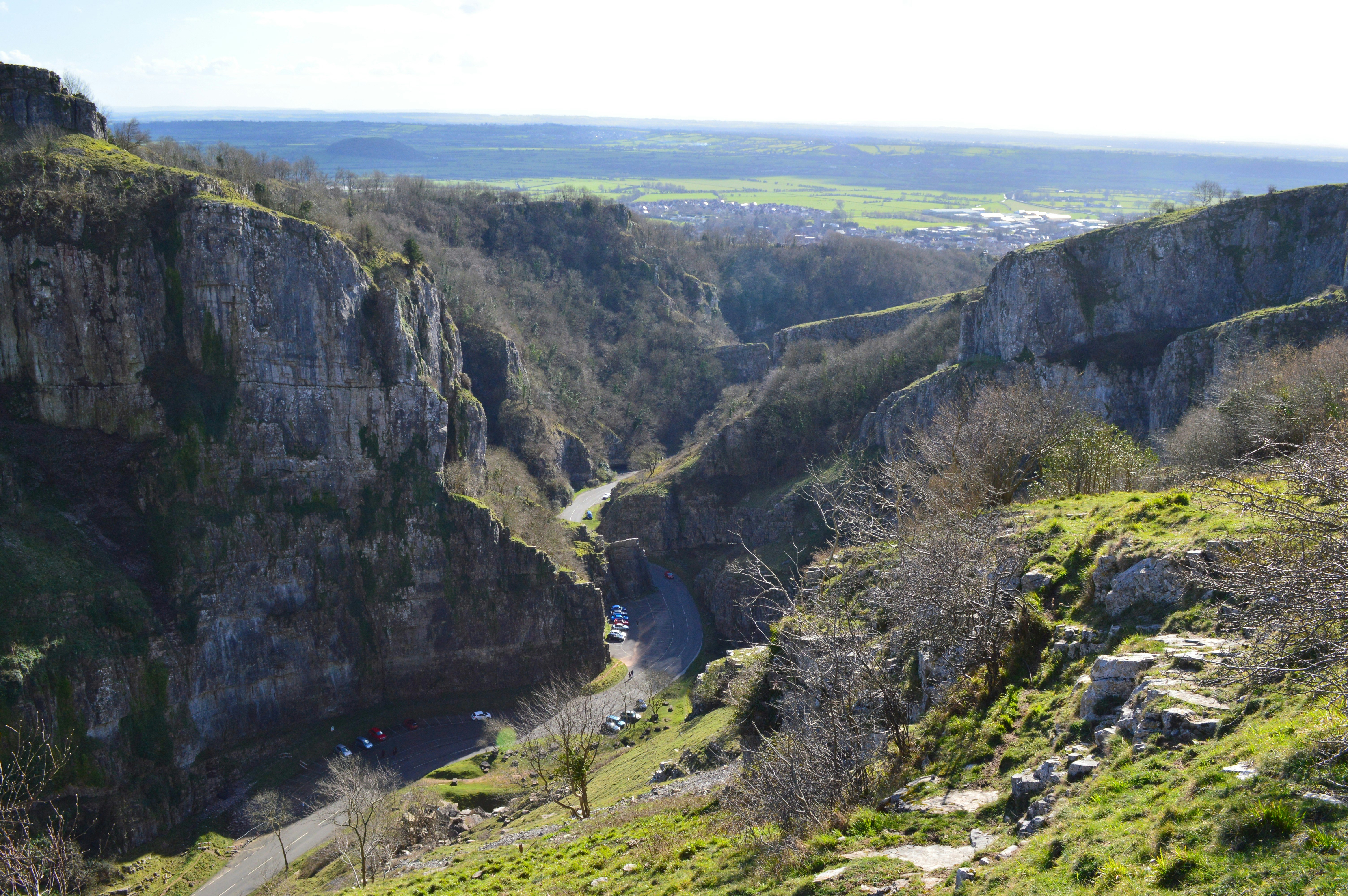
Hidden gems or little-known attractions in Glastonbury
- St Margaret's Chapel is a three-in-one venue in terms of attractions. The Chapel dates to the 13th century when it was part of the Abbey complex. The nearby Almshouse is open to visitors interested in a glimpse of 16th century life, and the surrounding gardens are peaceful and very well-tended.
- Although this legendary king is strongly associated with other towns and counties such as Tintagel in Cornwall, it is said that King Arthur's Tomb is in Glastonbury. He and his queen, Guinevere, are said to have been laid to rest here.
- If you are interested in curiosities ranging from items recording the history of the Sedgemoor Levels and associated peat industry to parts from crashed WWI bombers, then Sweets Peat Museum and Tearooms is for you. Note the opening hours are limited.
Markets
There are three weekly markets that are enjoyed by locals and visitors alike.
- Glastonbury Market: The stalls are colourful and quirky and offer arts and crafts, food, ceramics, clothing, and new age items such as crystals.
- Glastonbury Country Market: This is the market for those who want to buy fresh produce in addition to cakes, jewellery, soaps, and other handcrafts such as greeting cards.
- Glastonbury Indoor Market: The Indoor market offers a wide variety of both local and international items.
Magical, mystical & esoteric outings
Glastonbury is so bathed in belief, myth, and religion that it should be no surprise that it has taken its place as the centre for British New Age culture and healing. Equally unsurprisingly, there are several attractions that highlight this.
- Brides Mound is a small hill near Glastonbury, in an area called Beckery Island. It has been neglected for centuries but is now being lovingly restored and taking its place as the western gateway to Avalon.
- The Glastonbury Experience Courtyard is well worth visiting as it contains several very interesting shops (books, clothing, and various New Age items) and other attractions including the Goddess Temple. The temple was recognised as a Place of Worship in 2001 and is believed to be the first of its kind to be so for 1500 years.
- The Oaks of Avalon, also known as Gog and Magog, are considered the traditional entry point onto the Island of Avalon. It is believed they formed part of an avenue of oaks used by druids. While Gog is dead, the tree still stands. Magog is thought to be close to the end of her life.
- The Library of Avalon appears to be the only esoteric library that is accessible to the public. A reading room is available to both members and non-members.
- Divine Light Tours and Gothic Image Tours will take you on day tours or a short break to visit various sacred sites on the pilgrim’s path. On longer trips some pagan rituals and ceremonies are also included.
- The women guides and priestesses of Mystical Earth Tours offer tours, walks, ceremonies, and teachings to help others connect to the magical landscapes of the area.
- The walking tours offered by To the Trees focus on tree folklore, identification, myth, and legend. There are also Folk Fire Sing Arounds and Woodland Fire Folk Sing-alongs.
- Glastonbury Beltane or Mayday Celebrations take place annually on 1st May and include the colourful Dragon Procession, music, and street performers.
- The Glastonbury Zombie Walk is great fun for children and adults alike. Anybody can join in and there are face painting and dress-up stalls available, so you don’t need to go in costume.
Free stuff to do in Glastonbury
These have already been included but are worth listing again under the always important heading “free” although some locations and event organisers encourage donations:
- Glastonbury Tor
- The Abbey and its Museum
- Nature reserves
- Chalice Well and gardens
- The markets
- Cheddar Gorge
- Goddess Temple
- The carnivals
- St Margaret’s Chapel and Alms-house
- Vicar’s Close
FAQs
What is Glastonbury most famous for?
A: Although the town is becoming known for several of the myriad of other attractions on offer, it is still the annual music festival that is most associated with Glastonbury. This is borne out by the 1970 attendance figures versus the most recent one: 1 500 against 203 000 people.
Can you walk up Glastonbury Tor?
A: The foot of the Tor is a 10-minute walk from the High Street or the Abbey. There is a paved path on the south side that takes you to the summit; the ascent is hard going and not suitable for everyone. The path on the north side, which can be reached by bus, is not as well made but offers a less demanding walk.
When is the best time to visit Glastonbury?
A: Summer is the optimal season, especially if you want to walk or hike. Of course, you will be bound by specific event dates if you want to attend a carnival or festival. The solstices also offer a chance to attend events that celebrate the sun’s cycle.
